Like an uptempo banger at 3am, last week’s feature on Adelaide’s legendary nightclubs sent readers into a frenzy – so our intrepid club crawlers raided the vaults for pics and memories of 10 more classic clubs of the 80s, 90s and noughties.
Remember when you could go out and actually dance in close proximity to other people? Our readers certainly do, and responded to last week’s feature on long-gone nightclubs with so many memories of other venues from the ’70s, ’80s, ’90s and Noughties that we can now proudly present Adelaide’s Legendary Nightclubs, Part 2: The Hangover.
Writers Patrick McDonald and Anna Vlach might be too young (ahem) to have been out after dark in the 1960s and ’70s, but our readers recalled great times at the Lido, Trocadero, Tivoli, Countdown, the Cellar and the Paprika.
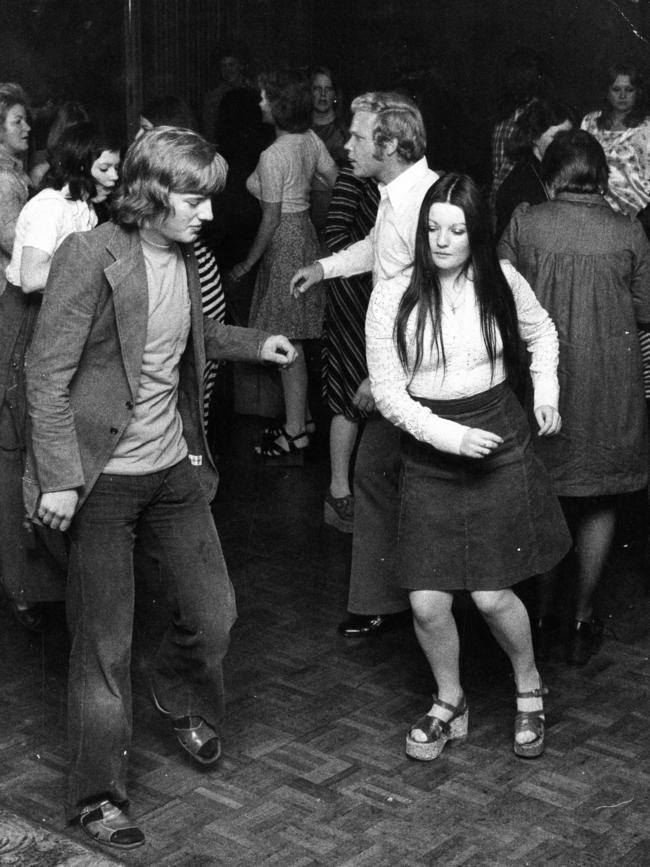
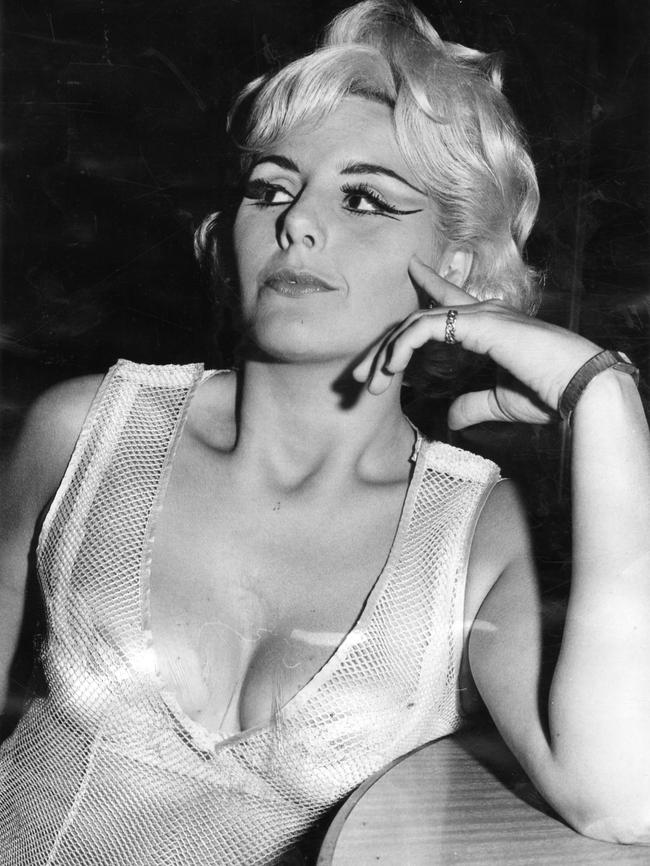
Then came Sam’s and Bojangles, Swinger in the old Hotel Australia hosted by radio icons Neil Humphrys and Ken Dickin, the Spaghetti Machine on Gouger Street, the 20 Plus Club in Grote Street hosted by “Big” Bob Francis, and Fiesta Villa at Findon Hotel hosted by Tony Pilkington, of Bazz & Pilko fame.
Later there was the up-market Juliana’s at the Hilton in Victoria Square, Waves at the Hyatt, Sinatra’s and the downstairs Lark & Tina’s on Hindley Street, and the massive Old Lion Underground, Tavern 63 and Bogart’s on Melbourne Street at North Adelaide.
Before it became grungy Le Rox, the upstairs venue on Light Square was a posh place called Da Vinci’s with polished brass and frosted glass partitions between booths. My, how things changed.
Basements venues at The Mansions Tavern and The Grenfell Tavern (aka “The Black Stump”) were popular with uni-aged crowds in the ’80s and early ’90s.
Back in the 1970s and 1980s, SANFL football club rooms also served as suburban nightspots – the Redlegs Club at Norwood and Bay Disco at Glenelg being chief among them for a bit of post-match action.
Q BAR

Who ever managed to get one of those elusive membership keyrings to jump the queue at Q Bar? The upstairs venue on Rundle Street was synonymous with cool and definitely the place for the rich and famous to make an appearance, be it Kylie Minogue playing pool or members of INXS making out with patrons in the cloak room. This writer was with comedian Adam Hills at Q Bar on the night it caught fire, and joked afterwards that, with Adam’s prosthetic foot, it was lucky he wasn’t also razed to the ground. Fortunately everyone made it out the rear emergency exit alive.
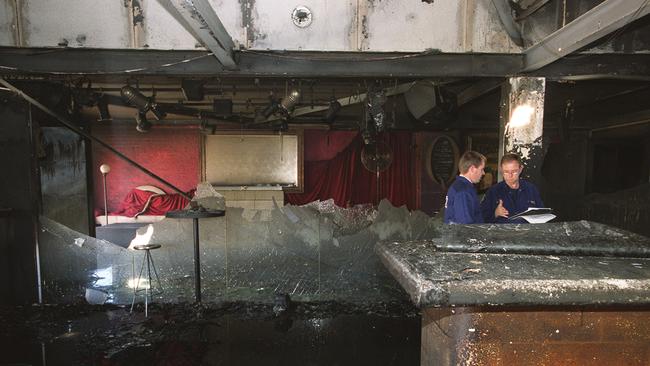
Firefighters said the blaze, which started in velvet curtains around the VIP lounge and spread through the rafters in a matter of minutes, reached 600C and caused the thick soundproof glass surrounding the dancefloor to explode. It was rebuilt and reopened before becoming Sugar in 2002, when it was taken over by consortium led by DJ and artist Driller Jet Armstong – who also used it to introduce Adelaide’s first vinyl record shop inside a nightclub.
TAPAS
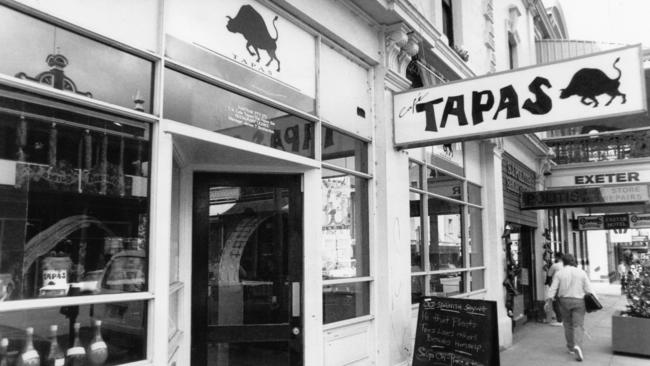
The food was always A-grade at this Rundle St cafe – which was a good thing, since booking a table early for dinner was about the only way to ensure getting in. By the time the street window blinds were pulled down and the tables were rolled away to make room for a dance floor, the line-up usually stretched down the block. Roughly rendered, Spanish-style indoor archways left about a one-metre wide space next to the bar, where everyone crammed while trying to order drinks and were constantly jostled by patrons trying to get back and forth to the bathroom.

A popular spot for visiting celebs and record company launch parties in the 1990s, by the 2000s it had become a retail space, now occupied by Dangerfield fashions. Tapas moved to Hindley St but never quite recaptured its glory days, and that location was finally demolished in 2016.
CLUB FOOTE / PROSCENIUM

The original Club Foote at 26 Blyth St, off Hindley St, opened as a comedy/cabaret Fringe venue in the mid-1980s, with acts including a young Frank Woodley’s theatre troupe and Shaun Micallef’s Marat Pack, and became a mainstay of great jazz acts like Vince Jones and the dance-worthy Bachelors from Prague. This writer went there to review the first Adelaide show by comedian Paul “Flacco” Livingston (before he found fame with the Doug Anthony All Stars and the ABC’s Big Gig) under his full original stage name of “Flacco de Penis”. However, I was the only person who turned up and he declined to perform.

By the time it became Proscenium in the 1990s, the venue was hosting major Festival shows by the likes of Andy Warhol associate Penny Arcade and had become the new home to Adelaide’s goth crowd and its burgeoning emo offspring, playing a mix of atmospheric pop classics and moody alternative music for people with very black haystacks of hair and even darker eyeliner. After sitting empty and decaying for a decade, the site was demolished in 2015 to make way for a Holiday Inn.
VODKA BAR
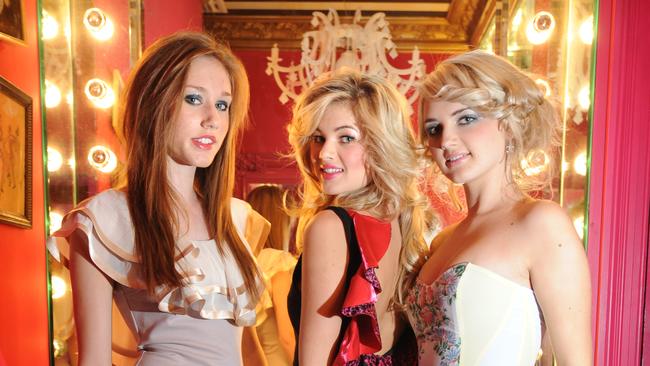
This was among the first of Adelaide’s laneway venues, its deliberately discreet entrance giving no clue about its opulent designer interior. A hidden, hole-in-the-wall entrance on Register St, with no signage on to speak of, gave Vodka Bar that “secret club” feel. The drinks were served by very, very good looking bar staff and the ground level dance floor upped the ante – and the volume – by frequently having a live percussionist play in time with the pumping DJ music.
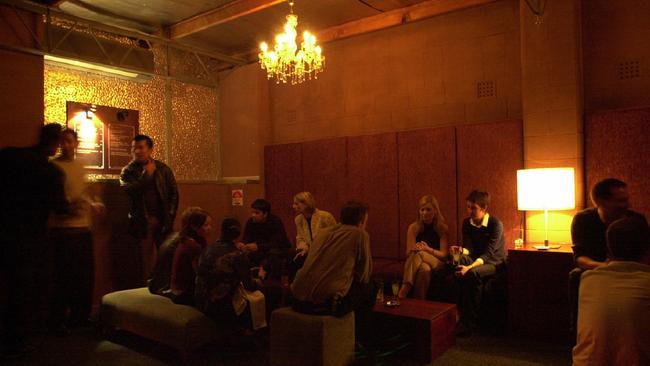
However, the real moves were being made upstairs in the more secluded and subdued VIP room with its ice bar, or in the luxuriously appointed pink Powder Room – a bathroom with a double meaning, if ever there was one. Like many venues in Adelaide’s west end, it has been consumed by the expansion of Uni SA. Apparently the new breed of tertiary students doesn’t party as long or hard as they used to …
SODA ROOM

Upstairs on the corner of Pirie and Hyde streets, in the early 2000s Soda was among the first Adelaide clubs to use bulk text messaging (or SMS as we called it then) as a newfangled, fast and cost-effective way to spread the word about upcoming events. Before you could get in, however, you had to pass the scornful scan of its Soviet-style door lady.
Thursday was funk night while Friday and Saturday brought a variety of house music from DJs Josh, PHD and Jay. A regular home to fashion events, the small stage often extended in a central catwalk, both of which became surrogate dancefloors. The venue changed hands and eventually closed in 2006. It’s now the new home of Adelaide’s premier comedy venue the Rhino Room, which also holds club nights. Rhino has even reopened the basement room, which reminds us of another ’80s club that was in Hyde St called My Place.
LIMBO

Somewhere between heaven and hell was Limbo – actually, it was in Fenn Place and was a masterpiece of late ’80s pop art, fun music and exuberant dancing. The false ceilings, walls, bars and booth fixtures were cut in a variety of brightly coloured geometric shapes, like album covers designs of the era, with gleaming metal surfaces. DJ Ian Bell often ruled on the decks, with his backwards baseball cap, ponytail and dark round sunglasses at night (Corey Hart, anyone?) This writer didn’t know him then and was too terrified to make a request lest he deign that my song selection was not cool enough to play.
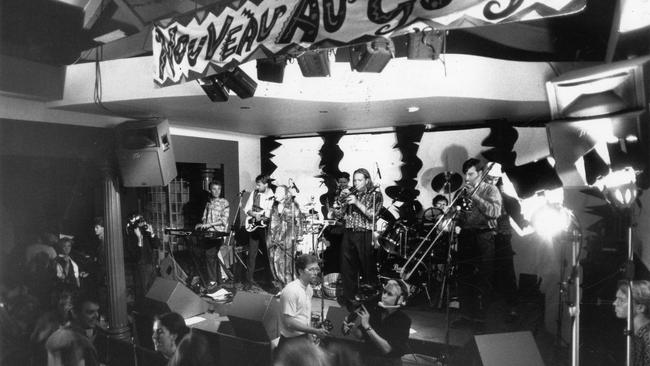
Great bands also played there in the early ’90s, like Nouveau Au Go Go (which also filmed a video on the stage) and rockabilly rebels The Eldorados, featuring singer and guitarist Paul Gurry, better known in recent years as the wild DJ who pumps out classic pop tracks at the Union Hotel. Another victim of redevelopment, it is also now part of Uni SA’s City West campus. A completely different venue, also called Limbo, opened in 2009, sandwiched between Electric Circus and Rocket Bar in Crippen Place.
CARGO CLUB
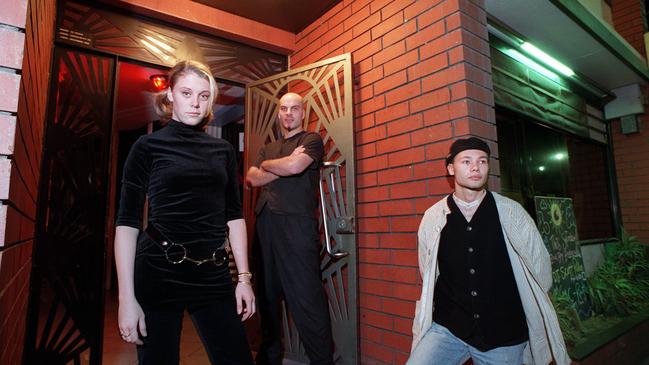
From 1988 through to 1999, Renato Capoccia transformed a family restaurant on the corner of Hindley and Clarendon streets into one of Adelaide’s most eclectic and inventive clubs, with nights dedicated to funk, acid jazz, techno, hip hop and even poetry. Live music and DJ sets went hand-in-hand, and you might have even seen a young Sia perform on stage or danced to Groove Terminator.
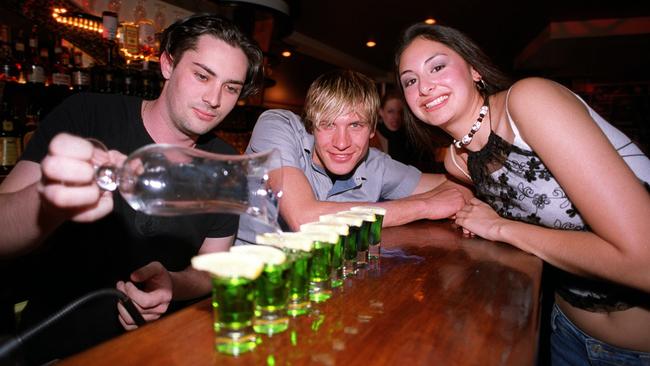
Unlike the usual weekend haunts, Cargo’s busiest night in those days was Wednesday, when artists and students were joined by hospitality workers who had just knocked off work at other venues. Cargo kept going under different management for another decade until the site was bought in 2010 by Uni SA, which built Pridham Hall on it in 2015. Does anyone detect a pattern here?
UNLEY ON CLYDE / BOHO

This place at Parkside has possibly had more names than the late great Prince, who started life as Prince Rogers Nelson, but was also known as The Purple One, The Artist Formerly Known As Prince and Love Symbol. In 1989, the The Waverley Hotel had a $3.5 million transformation to become Unley on Clyde. While it wasn’t strictly a nightclub, it certainly felt like one on a Thursday night in the mid-90s. It was so jam-packed, you would literally bump into people you knew and strangers in the night you hadn’t even managed to exchange glances with yet.
In 2005, there was another name change – to Boho – following an even more dramatic makeover. And, when we say dramatic, we mean it. Thanks to architect Mark Folland and set designer Victoria Lamb, Boho was like the Moulin Rouge, Spiegeltent, circus and fairground rolled into one. If Unley on Clyde was a little – let’s be honest – beige, Boho was so colourful it made you feel like you were deliriously drunk before you’d even had a sip of your drink.

``It is full of themes where people can escape into side shows such as sword swallowers and fire eaters, a pure theatrical atmosphere. The toilets are designed like dressing rooms. From the ground to the top floor, there will be scenery everywhere,’’ Folland told The Tiser at the time. This writer loved sitting upstairs and gazing at the little “night sky” ceiling which was actually speckled with stars, OK, tiny lights. There were entertainers such as snake charmers and Hans, who would roam around with his accordion interrupting first dates by serenading the hopeful single lady with Beyonce’s Single Ladies.
In 2015 Boho had another facelift to become The Unley. And yes, just like those people who have too much Botox, the place is now pretty much unrecognisable … but it saves face thanks to a handsome rooftop space.
ENJOYED THIS TRIP DOWN MEMORY LANE? THE NIGHT’S JUST GETTING STARTED – CHECK OUT PART 1 HERE!
OUR NIGHTCLUB CORRESPONDENTS
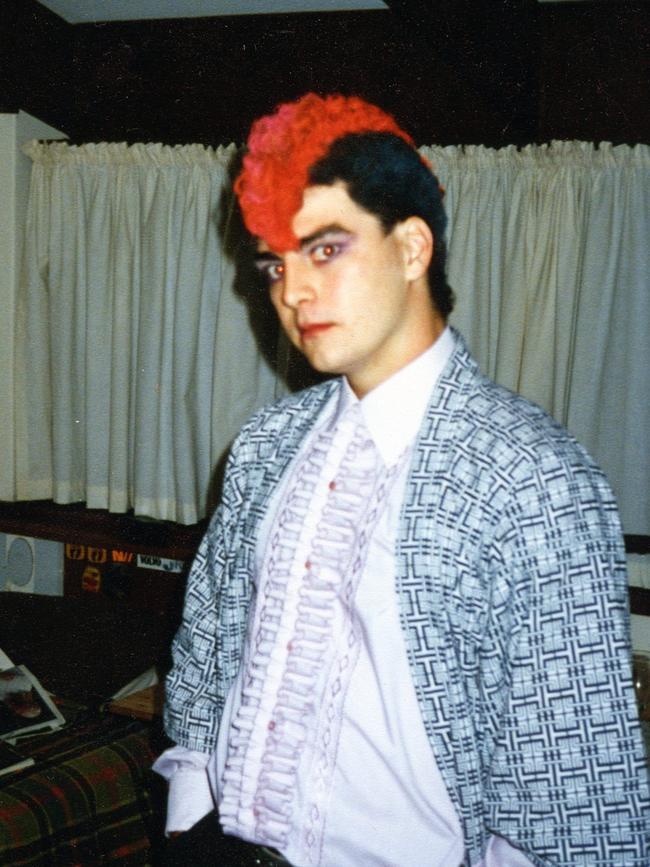
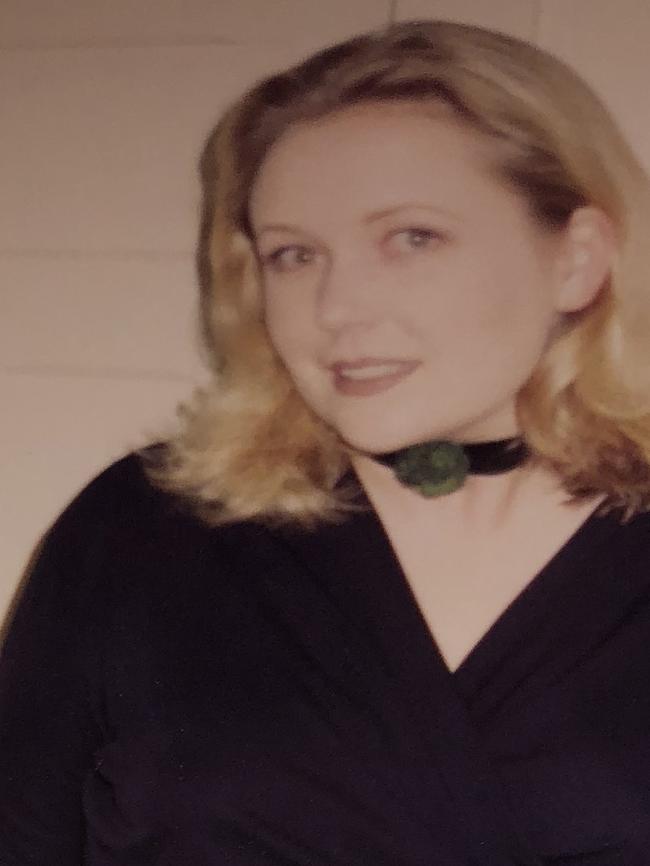
SEND US YOUR ADELAIDE NIGHTCLUB PHOTOS AND MEMORIES

Add your comment to this story
To join the conversation, please log in. Don't have an account? Register
Join the conversation, you are commenting as Logout
TV star’s health message to Australian women
Today Extra presenter Shelly Horton reveals the dark truth about perimenopause, as she admits it ‘almost broke me’ – and empowers women to take control of their health.
Taking on the Netflix effect: Hills cinema expands in SA-first
An SA entertainment family wants to redefine what a night out at the movies means, and says its $15m plan for a Hills cinema could be rolled out across Adelaide.